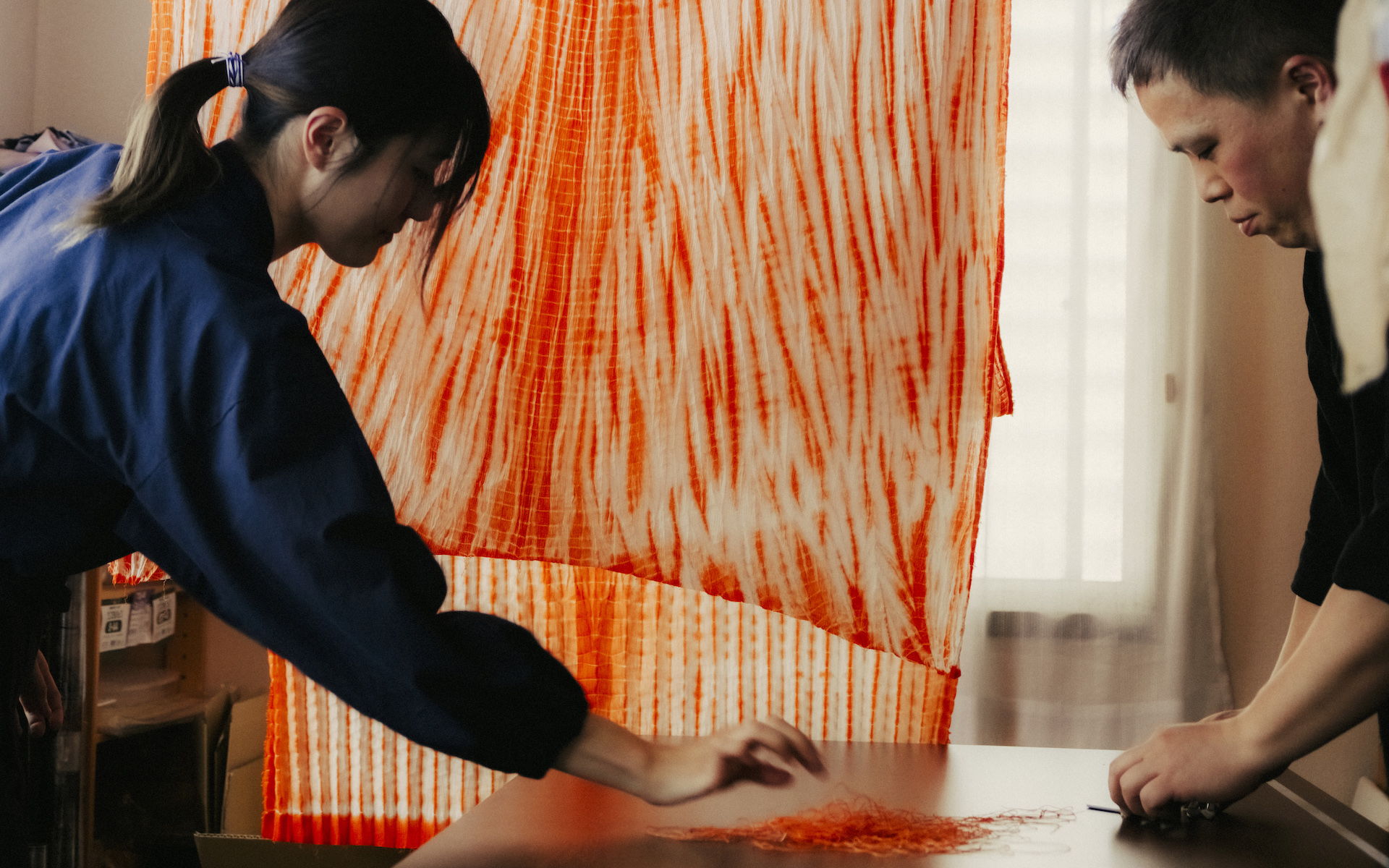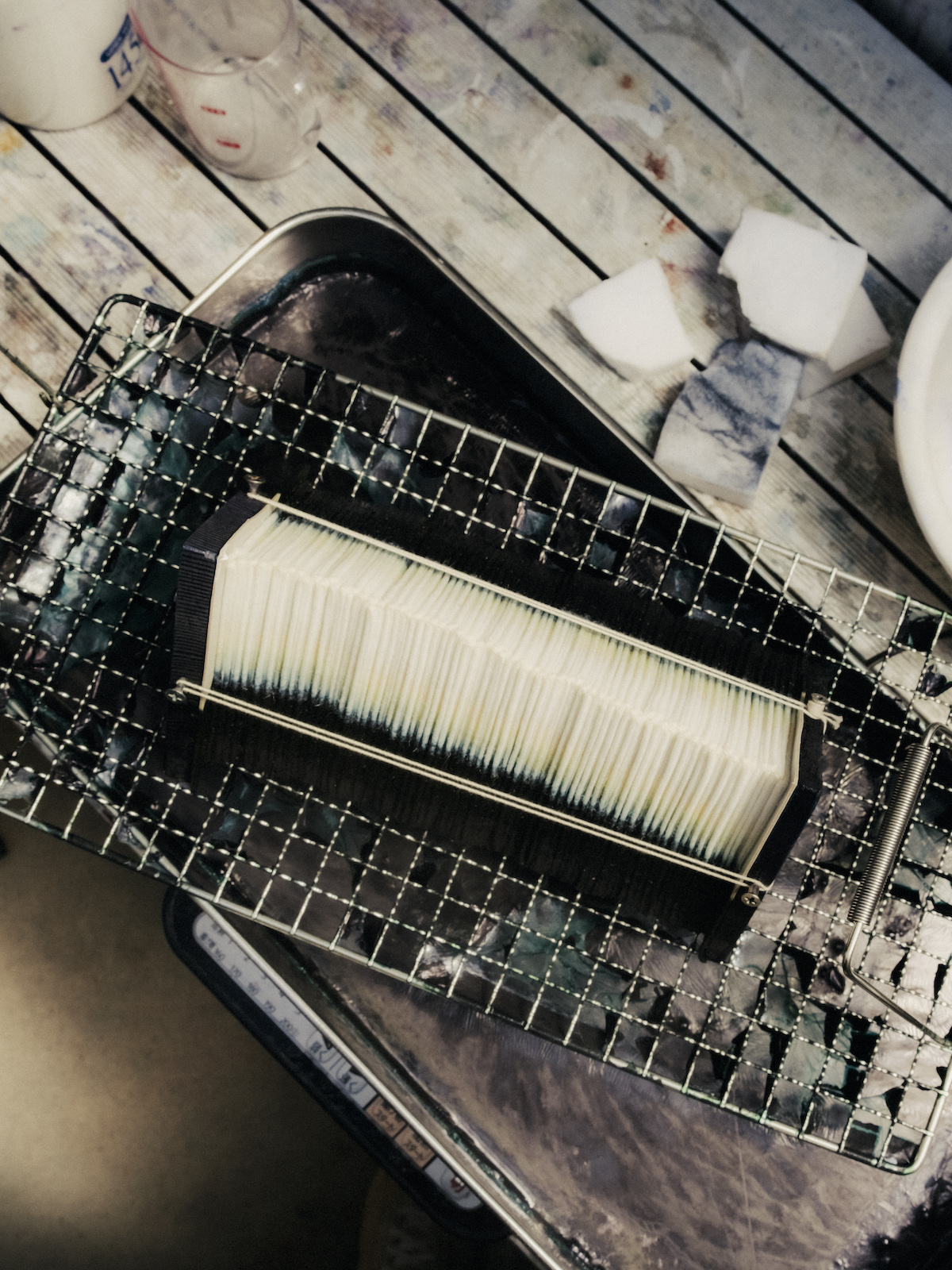
‘We wanted to create this feeling of water,’ says COS design director Karin Gustafsson of a new collection featuring the over-millennia-old Japanese tie-dye technique, shibori. Meaning to ‘to wring, squeeze or press’, the intricate process is achieved by manipulating the fabric into complex folds, which are then dyed before being unfurled to reveal the constellations of patterns left behind, which might conjure flowers and animals, or dripping stripes reminiscent of running water.
The journey would take her and her team to the ancient city of Kyoto, Japan’s historic capital which was first settled in the 7th century and flourished due to its plentiful supply of water, from lush mountain lakes and bountiful rivers – the Kamo-gawa in the east and the Katsura-gawa to the west – to its large natural water table, accessed through the thousands of wells across the city. Water also helped establish Kyoto’s synonymy with ritual and craft, allowing for the production of saké and tofu, fabric dyeing, ikebana and tea ceremonies, even the creation of kimonos.
COS x Tabata Shibori: the story behind the collection

’Wherever you go in the city, all the street names and the neighbourhoods, they are always associated with water,’ says shibori artisan Kazuki Tabata, whose eponymous Kyoto-based studio Tabata Shibori collaborated with COS on the limited-edition collection. ‘Everything is water.’
We talk in a suite on the upper floor of Kyoto’s Six Senses hotel, a recent opening in the city’s historic Higashiyama district, and a stone’s throw from the Toyokuni Shrine, constructed in the 16th century in memory of shogun Toyotomi Hideyoshi. It is a setting which proves an apt backdrop for the project: the hotel was inspired by Kyoto’s Heian era, a period rich with flourishing craft, best encapsulated by the 504 raku tiles that depict nearby Mount Kurama over the hotel’s reception desk, created by ceramic artisan Yoshimura Rakunyu in a process which took over two years.

‘Craft has always been important to COS, because we’ve always set out to create fashion and design that lasts beyond the season,’ says Gustafsson, who was connected to Tabata through local connections after being inspired by the art of shibori when creating the brand’s S/S 2024 collection. ‘It didn’t feel right for us to try and mimic shibori [ourselves], it was important for us to go to a true craftsperson, to recognise that there’s so much more behind it.’
Tabata, who was approached to undertake the project on Instagram, initially believed that he was being pranked, having never previously worked on a project of this scale. When he realised the approach was genuine, he agreed, and granted Gustafsson and her team access to his wealth of shibori designs – some of which, including one that features on a scarf in the collection, take him up to three weeks just to create the hundreds of meticulous origami-like folds in the fabric before it is dipped in dye (the latter process taking just a few moments; afterwards, the fabric is rinsed and washed, before finally being unfurled to reveal the resist-dyed pattern).

’I saw that the craftsman was going away in Japan,’ says Tabata, who was studying lighting and music at Osaka School of Sound Arts at the Visual Arts College, when his uncle, a shibori artisan, died. ‘I thought: if no one is doing shibori then it will go away too. So I took it up. I really wanted to keep the tradition going.’ After thousands of hours perfecting the craft, he discovered Kyoto’s kyo shikanoko shibori, a complex version of the technique that creates a pattern recalling the spots on fawns and requires days to create the tight rows and folds needed to achieve its unique design. It has since become his speciality.
In the collection itself, which spans menswear, womenswear and accessories, a handful of his unique designs are transposed as prints across the airy garments, which capture a mood of fluidity and lightness befitting the summertime release. ‘Mr Tabata’s work really informed the collection’s design,’ says Gustafsson. ‘We wanted to continue that idea of fluidity in the artwork, so we translated his designs across different fabrics and through different techniques.’ These include a version of the design woven into the fabric of a men’s jacket and shorts like traditional Indonesian ikat, while on other pieces – like a breezy kaftan dress – Tabata’s work seems to hover across its surface.

And, despite Tabata’s years spent mastering certain shibori techniques, Gustafsson says the unpredictable digressions of the dye encapsulate the Japanese concept of wabi-sabi – the acceptance of imperfections and flaws, and a belief in the ephemeral nature of beauty. ‘I think the beauty of imperfection is important,’ says Gustafsson. ’I think materials in life change with wear, which is something you should embrace rather than see as something negative. It’s amazing to see a garment that has gone through life; that has been enhanced by mending.’
As for how it feels to be in Kyoto as the year-long project readies to hit stores – backdropped by a programme that included a traditional tea ceremony; a ‘dinner party’ at Jugyuan, a restaurant housed in a 110-year-old sukiya building; and a workshop at Kyoto University of the Arts, where Tabata teaches – Gustafsson says she hopes the collection will encourage people to seek out and learn about shibori and traditional art forms like it. ‘We can’t take this type of craft for granted anymore.’
COS x Tabata Shibori is released today (5 June 2024). It is available from the COS website and selected COS stores worldwide.








